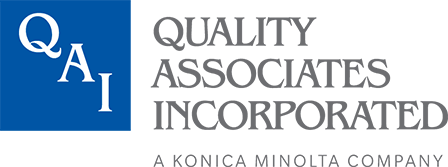As health officials prepare to roll out millions of H1N1 swine flu vaccines this fall, many are contemplating whether to get the shot or risk coming down with the illness. Yet for officials at the state and local level, the question isn’t whether to get the shot, but what to do with the millions of pages of healthcare forms that will begin piling up once the shot becomes available later this year.
“States, cities and private healthcare providers see this incoming flood of paperwork, and they don’t know how they are going to deal with it,” says Scott Swidersky, director of Information Systems at Quality Associates, Inc., a Maryland firm that specializes in extracting critical data from paper documents. Quality Associates recently launched an H1N1 healthcare consent form service just in time for the flu season. www.qualityassociatesinc.com
These one or two‐page consent forms must be completed by each flu shot recipient prior to getting the inoculation. The majority of these forms will be filled out by hand – therefore adding to the challenge of providing valuable data back to the healthcare provider, the states, healthcare officials, and others as needed.
To make things more complicated, information must be provided in a narrow timeframe for insurance purposes and to help federal government agencies such as the Centers for Disease Control study and understand the spread of the virus and the efficacy of the inoculation. There is also an element of disaster mitigation: If a batch, or lot, of flu vaccine is ineffective or contaminated, individuals will need to be contacted quickly.
Why mess with paperwork in the first place and just start with digital information?
Swidersky has a simple answer: Paper is portable.
“Imagine this scenario: It’s a crowded healthcare clinic or doctor’s office, and about two or three dozen patients are waiting around to receive their shot. The patients are in hurry, and the healthcare providers can only move so fast. A printed form on a clipboard is simple, straightforward and just about anyone can fill it out. The paper form, ultimately, is inviting because no one in this situation wants to deal with computer glitches or systems going haywire.”
Swidersky explains, “As a nation, we are using computers more frequently and are not as dependant on paper. In reality, paper isn’t going away any time soon, even during the H1N1 crisis.”
For more information, visit www.qualityassociatesinc.com.

